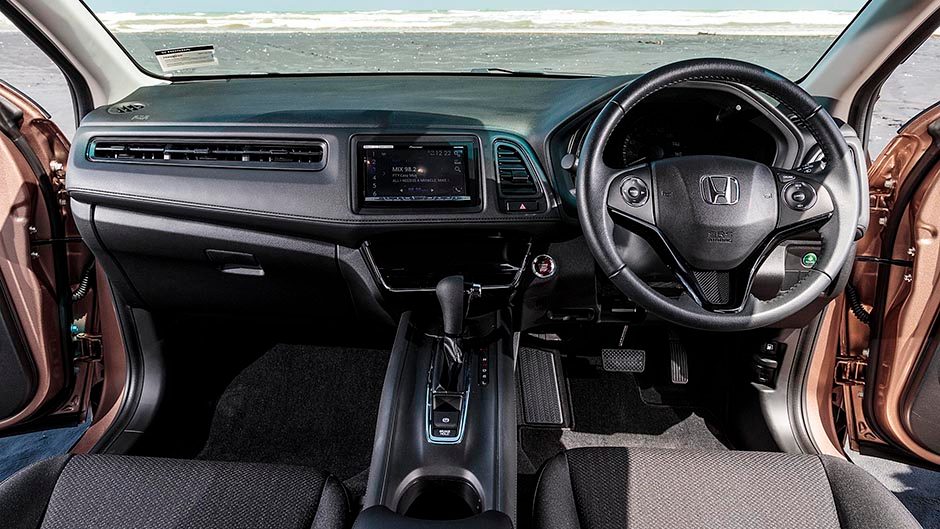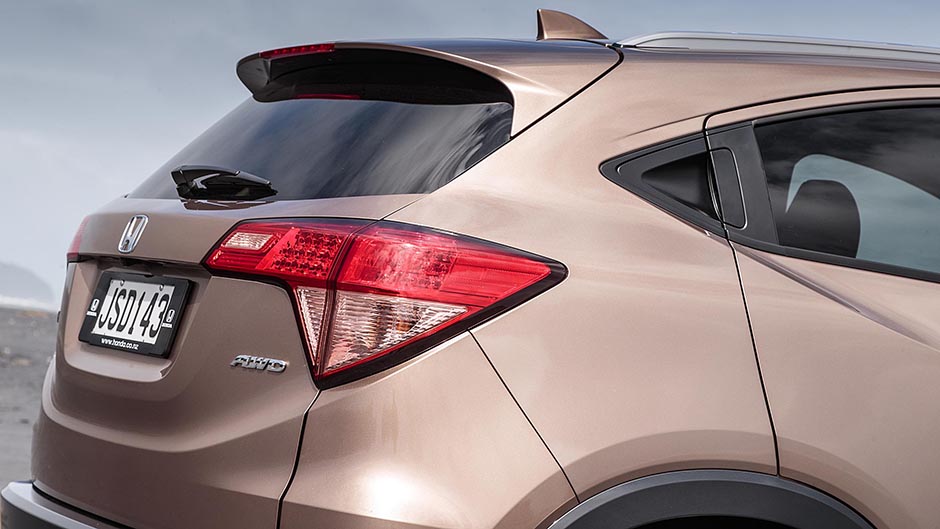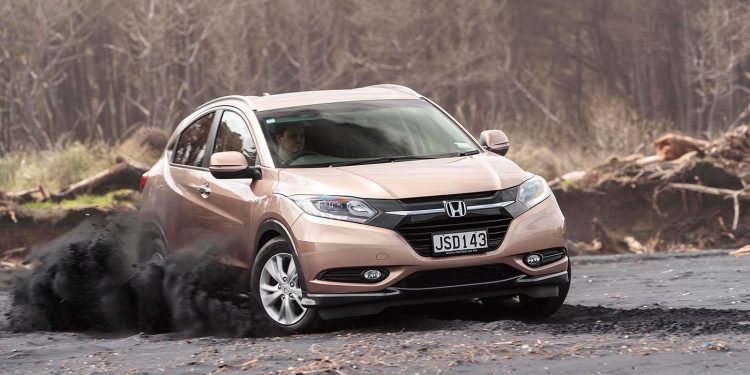2016 Honda HR-V AWD review
Words: Kyle Cassidy | Photos: Tom Gasnier
A carmaker can’t have too many SUV options; you need something to please everyone and so Honda has added an AWD variant to its HR-V range.
The HR-V AWD is a Japanese-spec model and so it has a smaller 1.5-litre engine whereas the front driver gets a 1.8. It’s not all bad though, for the 1.5 is the direct injection, twin-cam unit that isn’t shy to rev and makes okay torque too; peak outputs of 96kW and 155Nm are not far off the slow-to-rev 105kW/172Nm SOHC 1.8. While you do need to bury the throttle to catch that gap or effect an overtake, it does the job admirably for 90 per cent of driving tasks.
The engine is paired with a CVT which has D,S and L settings, the latter two keeping it lower in its ratio band to better whip the 1.5 along. While it gets a bit rowdy past 3500rpm, the AWD HR-V gets along alright, but the power never threatens the grip. The on-demand AWD system is said to activate all four wheels when you’re gunning it through bends and the HR-V happily stays the course, even with your foot buried. It steers in reasonable fashion, even if the weighting is a tad heavy at times, and the twin-piston ‘amplitude’ dampers ensure a fair degree of roll control on road, while their secondary piston is said to help soften the ride over rough going.

We took it off the tarmac, charging along the beach over the rutted, soft sand and while the bump stops got a bit of a tickle up, the HR-V made it’s way through, the AWD set-up ensuring it will get you further afield than the front drive model would ever be able to venture.
The weight of the AWD system is offset with added high strength steel in the unique AWD chassis construction which is said to improve rigidity and Honda claims the weight to be eight kilos less than the 2WD L model. It’s hard to compare fuel use figures between the two models as the AWD is quoted on the Japanese test cycle at 5.3L/100km which is an even more optimistic measure than the ADR/EU lab test which lists the 2WD model at 6.9L/100km.
The AWD model starts at $35,600, with a similar specification to the $36,900 2WD L model, but misses out on the city safety braking feature, among a few other items. Honda gives AWD buyers three infotainment options; a basic Pioneer unit with BT, a sat nav-equipped Honda unit for an extra $300 or, for a further $500, a Pioneer system with CarPlay and Android Auto. We like this idea; if you don’t want the connectivity, you don’t have to pay for it, and the $800 saved takes care of the on-road costs.

The AWD model gets LED headlights, a smart key, reversing camera, 16-inch alloys, six air bags, ESP and dual zone climate control.
The reason to opt for the HR-V in this class is its interior space. The AWD system doesn’t impinge on the load area, the floor set low and offering over 400L, though there is no spare wheel, just a tyre repair kit. The Magic Seat is present meaning easy split folding for a low, flattish load area along with the ability to flip up those seat bases too. The rear accommodation is grand for the class, so too the build quality, even if it is a tad pricey, particularly compared with the Vitara Turbo, which is worth considering first in this area of the market. But if you like HR-V, the AWD might be handy if you get a bit of snow in your locale, or travel on loose surfaces more often than usual.
| Model | Honda HR-V AWD | Price | $35,600 |
| Engine | 1498cc, IL4, DI, 96kW/155Nm | Drivetrain | CVT, on-demand AWD |
| Fuel Use | 5.3L/100km | C02 Output | 122g/km |
| 0-100km/h | 11.2sec | Weight | 1270kg |





